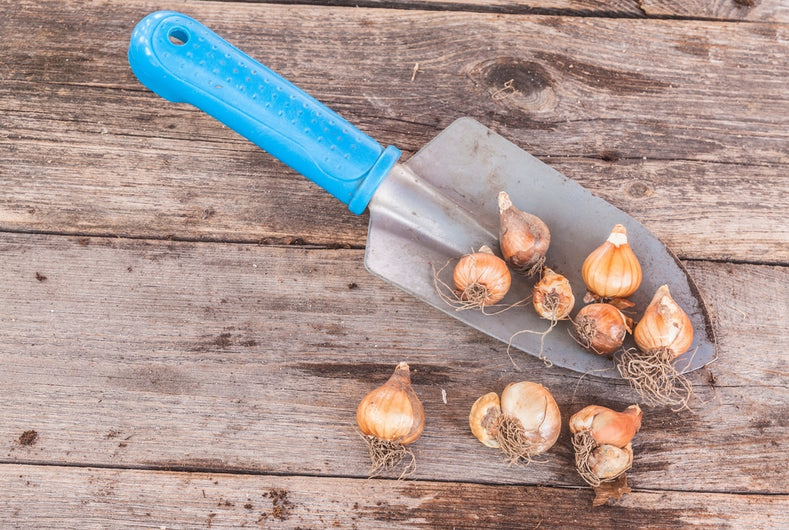Gardening, elevated – lifting bulbs after flowering
As a gardener you want your plants to look their absolute best. You are careful to plant them in the right spot, you water them regularly, remove any weeds that threaten to overtake them, and chances are you read a few gardening blogs or magazines as well. Amidst all the tips and tricks given in these articles, you sometimes come across the concept of “lifting”. Is this something you should do to your flower bulbs as well? And if so, what would be the best way to go about it? In this blog we’ll answer those questions, and give you some tips and tricks of our own.
To lift or to leave?
Unfortunately, there’s no one-size-fits-all answer to this question, as it depends on factors like soil, climate and type of flower, with tulips benefiting the most from lifting.
What does lifting your flower bulbs mean?
Lifting is the practice of taking flower bulbs out of ground a few weeks after they’ve bloomed, leaving them to dry and then planting them again in fall.
Why should I lift my flower bulbs?
Flower bulbs can be divided into two types: annuals and perennials. Annuals only grow for one season, while perennials come back year after year. But after a few years you might start to notice that some of your bulbs don’t bloom as big and beautiful as they once did, or don’t come back up at all. There are a few reasons this could be happening:
- Maybe you’ve been growing them in one spot for several years, and because of the naturalizing (multiplying) they’ve done, the spot has become overcrowded.
- During summer, the soil has become water-logged, either because you live in a very wet climate or because you use a sprinkler in summer to keep your lawn looking nice. Nothing will make bulbs rot faster than having wet feet.
- You live in an area with a lot of wildlife, who like to dig up your bulbs as their (summer)snack.
If your flower bulbs look a bit lackluster and your garden fits in one of the categories above, lifting might help restore them to their former greatness.
When should I lift my flower bulbs?
Lifting correctly is all about timing. The weeks after blooming are crucial and must not be disturbed, as this is when the nutrients flow back into the bulb, preparing it for next season. One thing you should do though, when you want to lift your bulbs, is to deadhead the spent bloom as this prevents the bulb from wasting energy on making seeds. During this stage, the foliage is working really hard to make as much nutrients as it can, so leave it until it has withered completely, which should be about 6 weeks after flowering.
How should I lift my flower bulbs?
Once the foliage has died off completely, it’s time to do the actual lifting. The biggest danger here is damaging the bulbs, so be sure to go about the process very carefully. Loosen the soil around the bulbs, and remove them with your hand or with a gardening fork. Throw away bulbs that look or feel damaged, rotten or diseased. If a large clump of new bulbs has formed around the original bulb, now is the time to separate them. Rub off the soil and the brown, dry tunic, and after that snip off the last of the foliage.
How should I store my flower bulbs after lifting?
To prepare them for storage, place the bulbs on a drying rack in a well-ventilated area and leave them there for 2-3 days. After this the bulbs should be stored in a dry, dark cool space (around 45 F), in burlap sacks, produce nets or even old pantyhose. Hanging them from the ceiling ensures good air circulation and prevents them from becoming moldy. Other modes of storage include dry peat moss or clean dry sand inside a cardboard box or paper bag.
When can I plant my lifted flower bulbs again?
Once fall has come around and the leaves are turning, it’s time to get your bulbs out of storage and back into the ground. Check them well and discard the ones that have become soft or moldy. But don’t worry when they look shriveled and dry, as it is precisely that which makes the suitable for planting again. Plant them in a sunny spot with well-draining soil, water well and wait for next spring, when they’ll come up looking like new.

